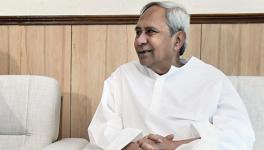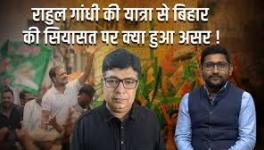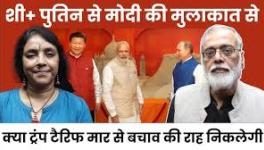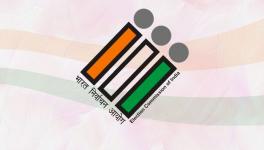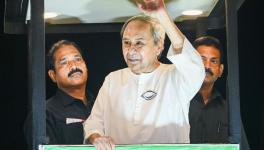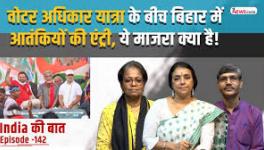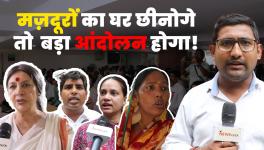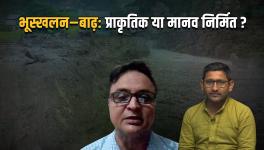Rahul’s Systemic Reform & Media Underplay
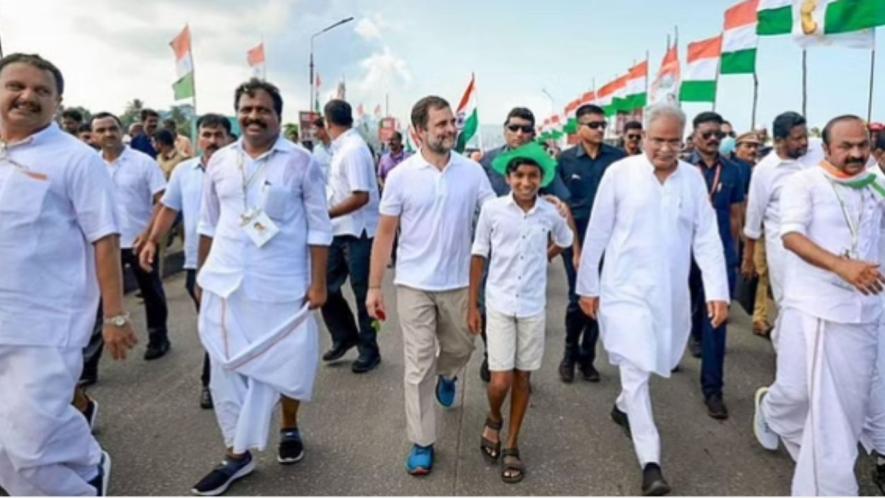
File Image
Recently one English television news channel conducted a typical 'state of the nation' survey and declared that Congress leader Rahul Gandhi got 25% preferential votes for the Prime Minister’s post and Bharatiya Janata Party’s (BJP) Narendra Modi got 52%.
If one conducts such polls in a communally-instilled population, a secular socio-political reform leader would certainly get less votes.
Such mobile phone surveys might show some trend but what the media is under-estimating is the long-term impact of Rahul Gandhi’s fight for reforms in the Indian socio-political system, which will do greater good to the country. If the regional parties go with Rahul Gandhi in the real elections, such online polls will go haywire.
If Rahul Gandhi becomes Prime Minister with such reform politics for human equality and social justice, Indian history will remember him, just as the Americans remember Abraham Lincoln. But the Indian media is also against his fight to shape India in a reformed mode.
UNEXPECTED RISE OF RAHUL GANDHI
Rahul Gandhi is a persecuted Opposition leader with his party holding a 100 seats Parliament. He faces several cases that have been slapped just to harass him. He led the Congress party in difficult states, such as Telangana, Karnataka and Himachal Pradesh, to victory. Earlier, under his leadership, the party had won in Punjab, too.
In the battle of elections, Rahul Gandhi has become a mass leader more than any other BJP leader, including Modi, who was not a mass leader before he was sent to Gujarat by the BJP’s central leadership to power in 2001. Modi became a communally polarising leader after the Godhra incident and the 2002 communal violence in Gujarat. His main agenda was anti-Muslim and anti-Christian, projecting both as “foreign religions”, as part of the Rashtriya Swayamsevak Sangh or RSS/BJP combine’s 100-year-old ideological campaign against these two religions.
Modi also built his image among communalised Hindus as a strong anti-Nehru family leader. He won the 2014 general election in an atmosphere of 10-year rule of the Congress-led United Progressive Alliance (UPA) with a non-political Prime Minister, Manmohan Singh, in the saddle. By the time the 2014 elections arrived, both Singh and then Congress president Sonia Gandhi were not in a position to address even one major public meeting because of their health issues.
In that situation, Rahul Gandhi did not know how to fight Modi, who claimed that he was the first OBC (Other Backward Class) Prime Ministerial candidate and was the main campaigner of BJP.
AN UNUSUAL UPBRINGING
Having been brought up in an atmosphere of serious threat to his family after Prime Minister Indira Gandhi’s (his grandmother) brutal assassination, a powerful Prime Minister, and Rajiv Gandhi’s (his father) assassination when he was Opposition leader, Rahul Gandhi did not know what India actually was. In particular, he did not know what the caste system was and why the system allows so much violence.
But neither RSS nor Modi had any social or caste reform formula in owning up the OBC card that was played in that election. Social and caste reform was never in the agenda of RSS or Modi.
When this writer met Rahul Gandhi before the 2014 election, he had no clue how the OBC card would affect the election results. He was the main campaigner of the Congress party. Since he entered into politics just in the 2004 elections and the party came to power, he did not learn through political struggles of his own.
India is a complex country. To counter an organization, like RSS’s, strategies, Rahul Gandhi needed to go through a personal struggle and reform.
YATRAS HAVE SHOWN RAHUL THE REAL INDIA
In order to fight such a powerful social divider network in power at Delhi, in the process of massive attack on his heritage and individuality, with well-organised anti-Rahul media in their hands, he had to evolve into a leader on his own and fight back. He had no way except to adopt new methods of social and political reform by understanding the Indian caste system and the agrarian situation, as well as the status of Indian education among the working castes.
Since Modi had shifted the discourse to caste from 2014, Rahul Gandhi had to study and perceive politics through his experience of struggle. His party structure was against a serious discourse on caste—particularly about the caste census, English medium education for all in rural areas and even to reduce the caste-based disconnect in society. Earlier, the Congress also allowed English medium education in the private sector for the rich upper castes. Its classical secularism ideology was not enough to fight RSS, Modi and his confidante Amit Shah.
However, Rahul Gandhi found a way in the first Bharat Jodo Yatra. Social media helped in changing his image. But the so-called mainstream media was always focusing one the question: do such yatras get votes? They did not see the serious implication of his slogan “Nafrat Ki Bazaar Mein, Mohabat Ki Dukan” (In Market of Hatred, a Shop of Love). They saw that slogan as just anti-BJP communalism. But it had deeper implications on the caste and untouchability system in India. There were no loving relationships between upper castes and Dalits/OBCs/Adivasis. Loving the neighbor is not part of the RSS Sanatana Parampara (tradition).
That slogan attracted educated Dalit and OBC youth, more than Muslim youth.
Read Also: Understanding the Growth of European Style Nationalism in India
Rahul Gandhi’s Bharat Jodo Nyay Yatra made that message clearer. Nobody from the RSS fold was trained to start a mass movement for social reform. The Indian big media did not see the new Rahul Gandhi – who spoke of socio-political reform with the aim of capturing power from RSS/BJP through the yatra, which had an anti-caste and anti-elite formulation.
When Rahul Gandhi became Leader of Opposition leader in Lok Sabha, with Congress winning 100 seats, he won half the battle. Mere vote manipulation is one thing, pushing the electoral process into social reform is another. No Indian leader after Ambedkar and Gandhi have tried such a method.
‘VOTE THEFT’ CAMPAIGN
With the “Vote Theft” campaign, as Rahul Gandhi himself said, he started “fighting the fire”. But his determined Bihar #VoterAdhikarYatra definitely is showing new mobilisation. This is not just an election winning issue. It is an issue of saving democracy itself.
Yet, the big media has quite deliberately confined Rahul Gandhi’s yatras and campaigns to vote and power politics. The upper castes, in all camps, not just in the RSS/BJP camp, do not want to project him as a socio-political reform leader. Such projection of a person from the Nehru family will have long-term implications. There is a strong history of anti-socio-political reform parampara among the upper castes. So far, the Nehru family is known as a “political power” family, as Nehru did not write much about social reform.
The mainstream Indian media does not want serious caste and education reforms, as that will create a crisis in their deeply settled historical hegemony. The secularism of liberal and Left anti-communal campaigns do not include caste reform. The idea of a caste census unsettles this hegemony through ‘number consciousness’. Rahul Gandhi seems to have understood its deeper implication on the future of India, as ‘number consciousness’ among the oppressed castes helps them to deconstruct the silent minority’s double standards.
The writer is a political theorist, social activist and author. His latest book is ‘The Shudra Rebellion’. The views are personal.
Get the latest reports & analysis with people's perspective on Protests, movements & deep analytical videos, discussions of the current affairs in your Telegram app. Subscribe to NewsClick's Telegram channel & get Real-Time updates on stories, as they get published on our website.









